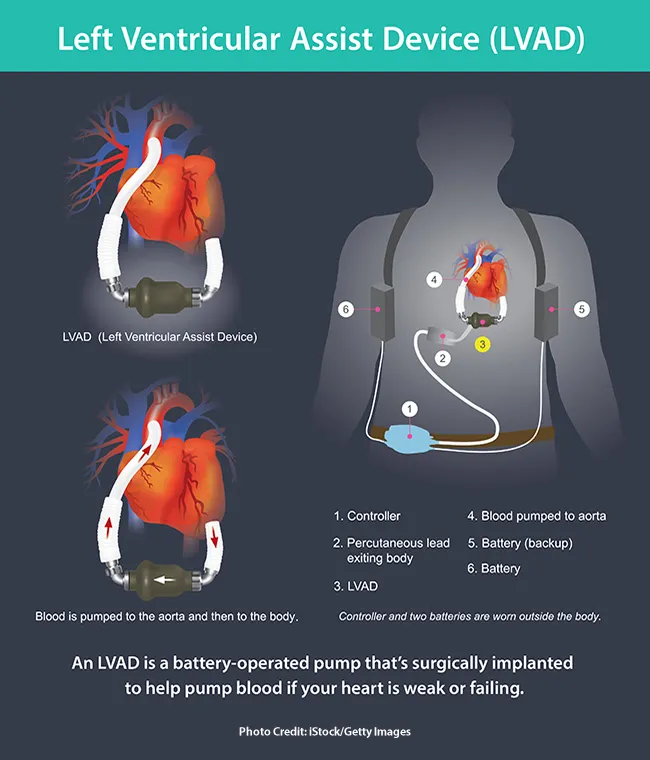What Is an LVAD?
A left ventricular assist device, or LVAD, is a mechanical pump that is implanted inside a person's chest to help a weakened heart pump blood.
Unlike a total artificial heart, the LVAD doesn't replace the heart. It just helps it do its job. This can mean the difference between life and death for a person whose heart needs a rest after open-heart surgery or for people waiting for a heart transplant. LVADs are often called a "bridge to transplant."
LVADs may also be used as ''destination therapy.'' This means it is used long-term in some terminally ill people whose condition makes it impossible for them to get a heart transplant.

How Does an LVAD Work?
Like the heart, the LVAD is a pump. It’s surgically implanted just below the heart. One end is attached to the left ventricle -- that's the chamber of the heart that pumps blood out of the heart and into the body. The other end is attached to the aorta, the body's main artery.
Blood flows from the heart into the pump. When sensors indicate that the LVAD is full, the blood in the device is moved into the aorta.
A tube passes from the device through the skin. This tube, called the driveline, connects the pump to the external controller and power source.
The pump and its connections are implanted during open-heart surgery. A computer controller, a power pack, and a reserve power pack remain outside the body. Some models let a person wear these external units on a belt or harness outside.
The power pack has to be recharged at night.
What Are the Benefits of an LVAD?
An LVAD restores blood flow to a person whose heart has been weakened by heart disease. This helps relieve some symptoms, such as being constantly tired or short of breath.
In rare cases, it lets the heart recover its normal ability by giving it a chance to rest. It maintains or improves other organs, helps with doing exercise, and lets the person go through cardiac rehabilitation.
What Are the Risks of Getting an LVAD?
As with any surgery, there are risks involved. Your surgeon will tell you the risks for this procedure.
After surgery, there are other risks, including:
- Infection
- Internal bleeding
- Heart failure
- Device failure
- Blood clots
- Stroke
- Respiratory failure
- Kidney failure
Talk to your doctor to find out if a LVAD is right for you.

